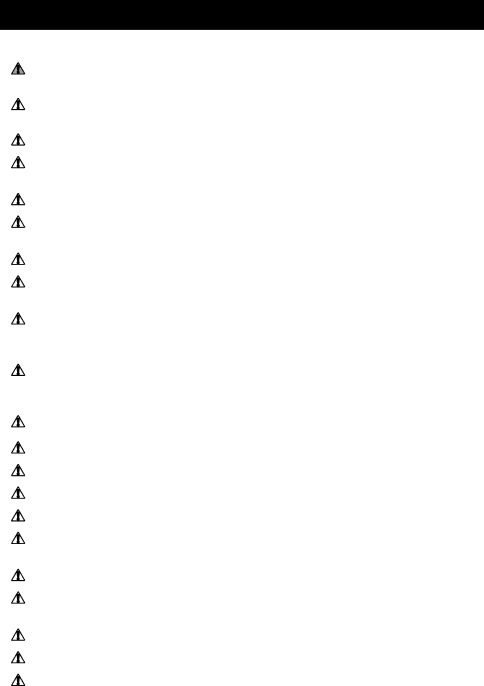
Safety Information
OPERATING THE DEVICE (continued)
Do not operate where oxygen is being administered in a closed environment (such as an oxygen tent).
Provide close supervision when this device is used by, on, or near infants, children or compromised individuals.
If the device is used continuously, the service life of the device may be shortened.
Limit use to 20 minutes at a time, and allow a 40 minutes interval before using the device again.
When using the device, the main unit may become hot.
Do not touch the main unit for other than necessary operation such as turning off the power while nebulizing.
Do not insert any object into the compressor.
Make sure the air filter is clean. If the air filter has changed color or has been used on average for more than 60 days, replace it with a new one.
Make sure the nebulizer kit is correctly assembled, the air filter is properly installed, and the air tube is correctly connected to the compressor and the nebulizer kit. Air may leak from the air tube during use if not securely connected.
Inspect the compressor (main unit) and the nebulizer parts each time before using nebulizer kit. Make sure no parts are damaged, the nozzle and air tube are not blocked and the compressor operates normally.
Do not use the device if the air tube is bent.
Do not block the air filter cover.
Do not alter the baffle, the nozzle in the medication cup or any part of the nebulizer kit.
Do not add more than 7mL of medication to the medication cup.
Do not operate the device at temperatures greater than +40˚C (+104˚F).
Do not tilt the nebulizer kit so the angle of the kit is greater than 45˚. Medication may flow into the mouth.
Do not shake the nebulizer kit while using the device.
Do not subject the compressor or any of the components to strong shocks, such as dropping on the floor.
This device is approved for human use only.
Do not disassemble or attempt to repair the device or components.
Operate the device only as intended. Do not use the device for any other purpose.
6